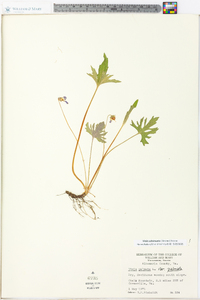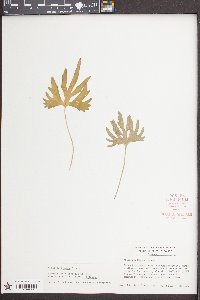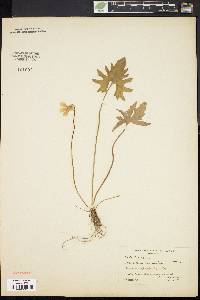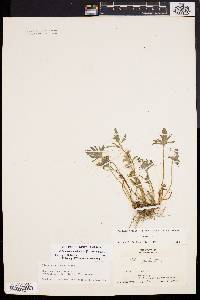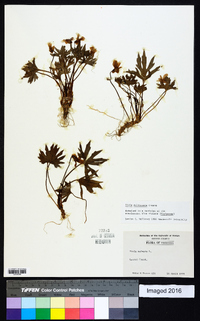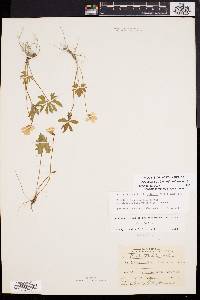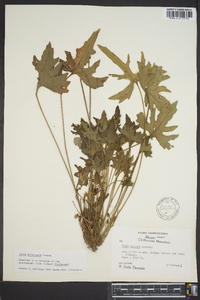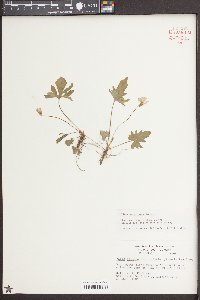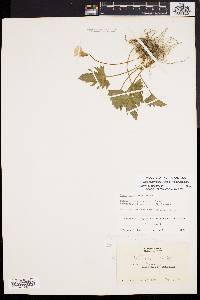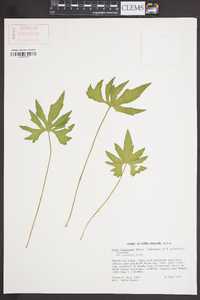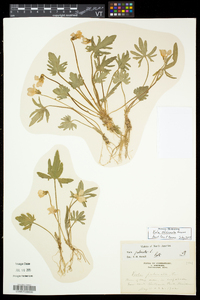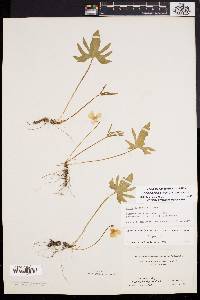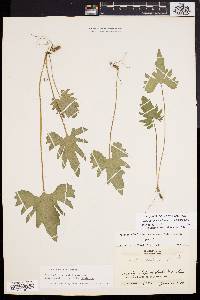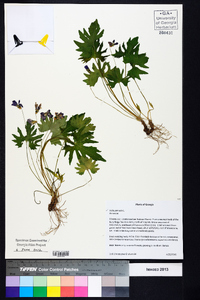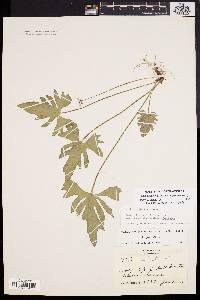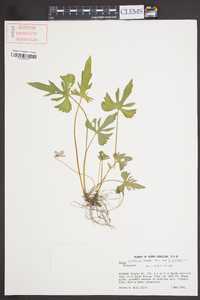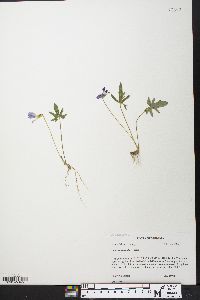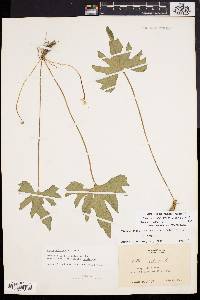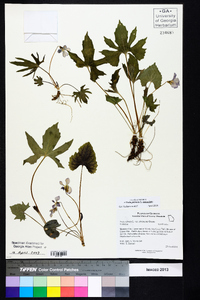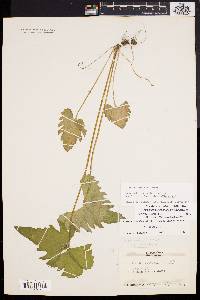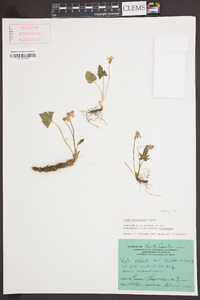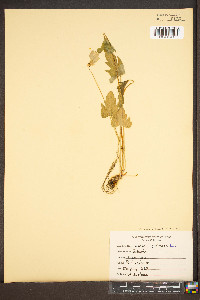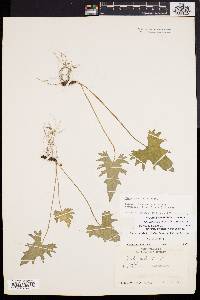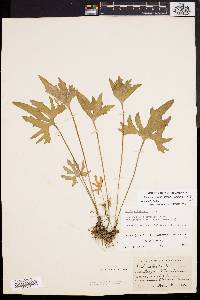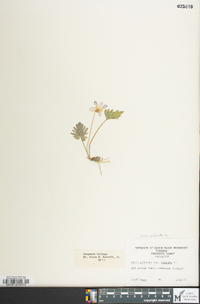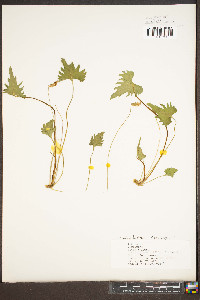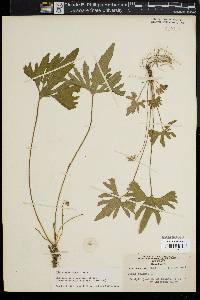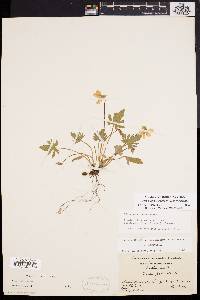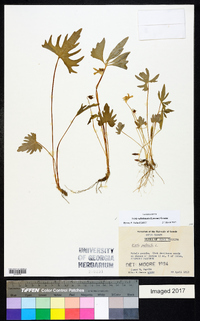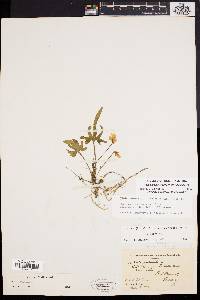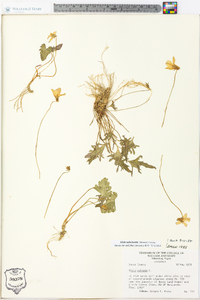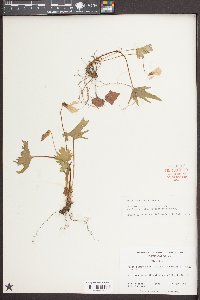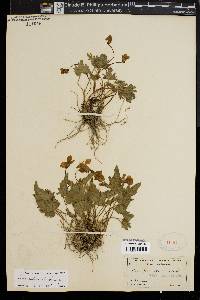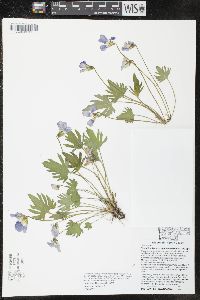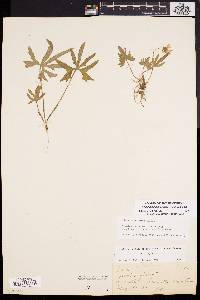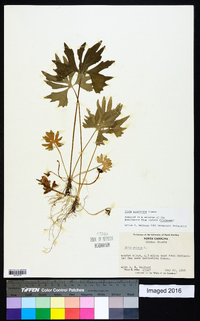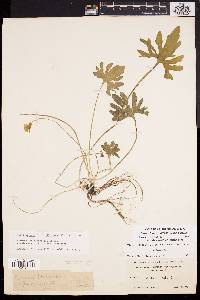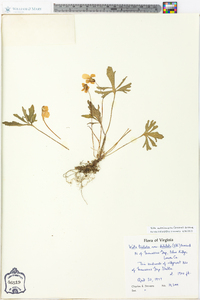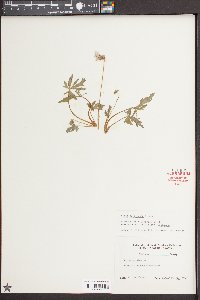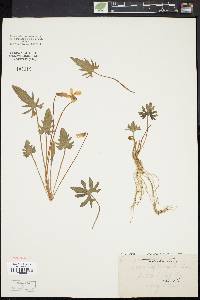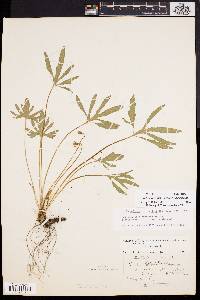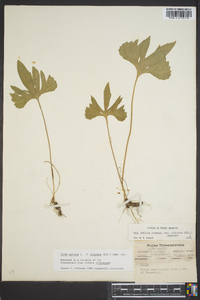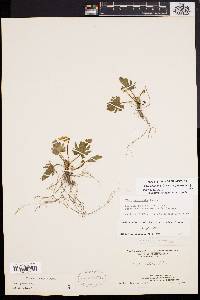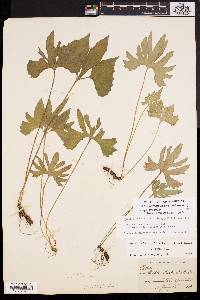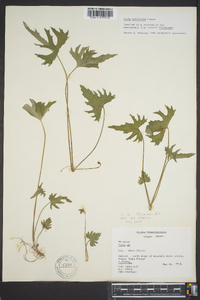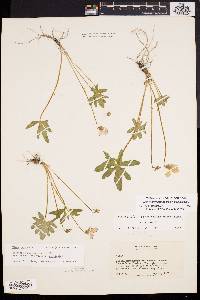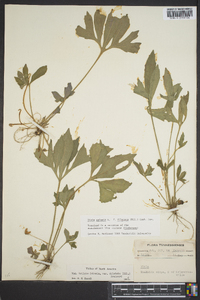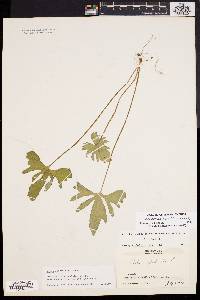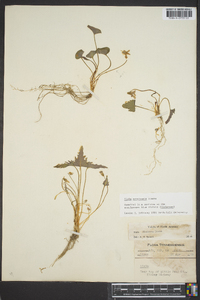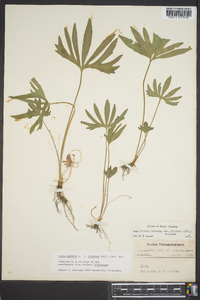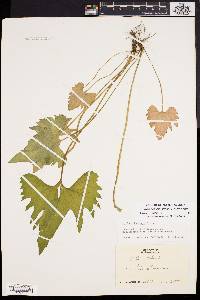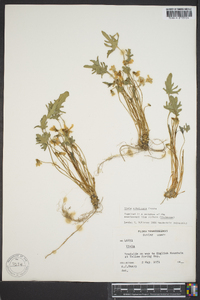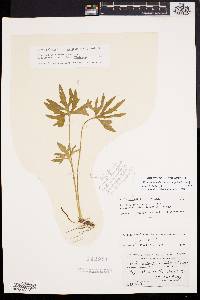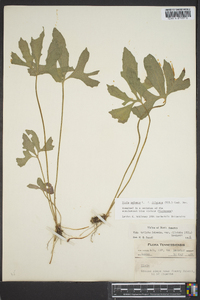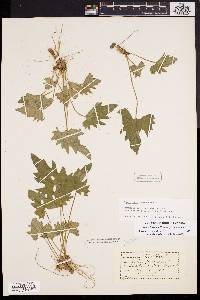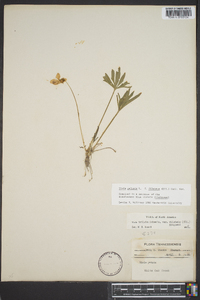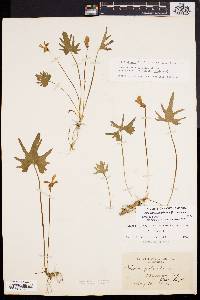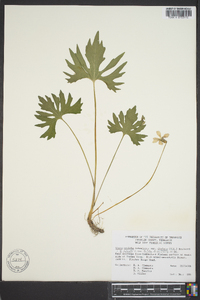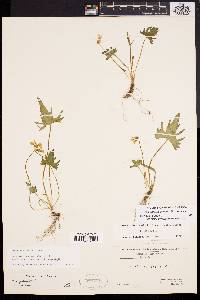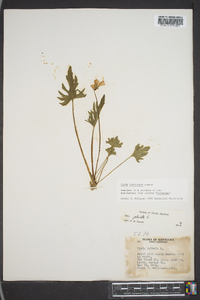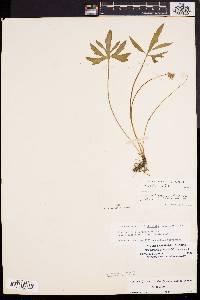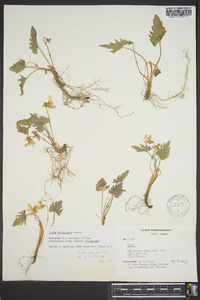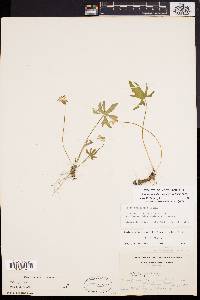Viola subsinuata
|
|
|
|
Family: Violaceae
Early Blue Violet
[Viola agellae Pollard, moreViola x subsinuata (Greene) Greene (pro sp.)] |
Perennial herb 10 - 30 cm tall Stem: absent aboveground, leaves and flowers arising independently and directly from a rootstock of thick (much greater than 3 mm diameter), prostrate or ascending rhizomes, but lacking runners (stolons). Leaves: basal, ascending to erect, long-stalked, appressed long-hairy, often somewhat toothed, under one and a half times longer than wide, coarsely three-lobed with three major sections further divided into somewhat elongate, triangular to narrowly egg-shaped divisions. However, on young leaves the terminal leaf lobe is not usually divided into further lobes. Leaf stalks long-hairy and separate from the green, less than 1.5 cm long stipules. Flowers: ascending to erectly-stalked, light to dark blue-violet, about 2 cm long, bilaterally symmetric with two upper petals, two lateral petals, and lower petal with base modified into a rounded nectar spur. In the summer, producing very fertile flowers that do not open (cleistogamous). Sepals: five, green, oblong with blunt or rounded tips and ear-like appendages (auricles) at the base. Petals: five, separate, all differently shaped, but all forward-facing. The two lateral petals often have a beard of hairs near the base, while the lowest petal rarely has any hairs, but is prolonged at its base into a short, rounded spur or sac. Stamens: five, separate, but very tightly arranged so anthers touch as they surround ovary. The filaments are very short (anthers not exposed), and the lower two stamens have spur-like nectaries on their backs that extend into the spur or sac of the lower petal. Pistil: with a single-chambered, superior ovary; and a single style that expands into a short, scoop-shaped stigma. Fruit: a many-seeded, green with purple flecks, hairless, ellipsoid capsule on prostrate or arched stalks. The capsule opens lengthwise from its top to disperse the seeds which have a large amount of oily endosperm, and often an appendage (aril). Similar species: Viola x subsinuata is incredibly similar to V. x palmata, but that hybrid has unlobed young leaves, and even the later season lobed leaves never have the terminal lobe further lobed. Also very similar is V. pedatifida, one of the parents of this hybrid, but that species has much shorter hairs on the leaves and leaf stalks, the leaves are usually more deeply lobed (almost to the base), and the capsules are entirely green and situated on long, erect stalks. Some similarities exist with V. sagittata and its varieties, except their leaves are always more than one and a half times longer than wide, the sepals are longer and taper to a sharp point, the spur petal is heavily bearded with hairs, and the capsules are entirely green and situated on erect stalks. Flowering: April to early June Habitat and ecology: Occasional, primarily in oak woods. Occurence in the Chicago region: native Notes: This is the hybrid between Viola pedatifida and V. sororia. As with V. x palmata, this taxon has been variously treated as a hybrid (V. x subsinuata) or as a species of hybrid origin (V. subsinuata). We follow Ballard (1994) and feel the hybrid indication is most appropriate. Some authors choose to lump this taxon with V. x palmata, the closely related hybrid between V. sororia and V. sagittata (in a wide sense), under the name V. palmata in which case it would be most desirable to call that a species complex instead of a species. Both McKinney (1992) and Ballard (1994) argue for the separation of these entities. Etymology: Viola is the classical name for the genus. Subsinuata comes from sinuata meaning "with a wavy margin", and adding the prefix "sub", meaning below, refers to the leaves having deep lobes. Author: The Field Museum |


